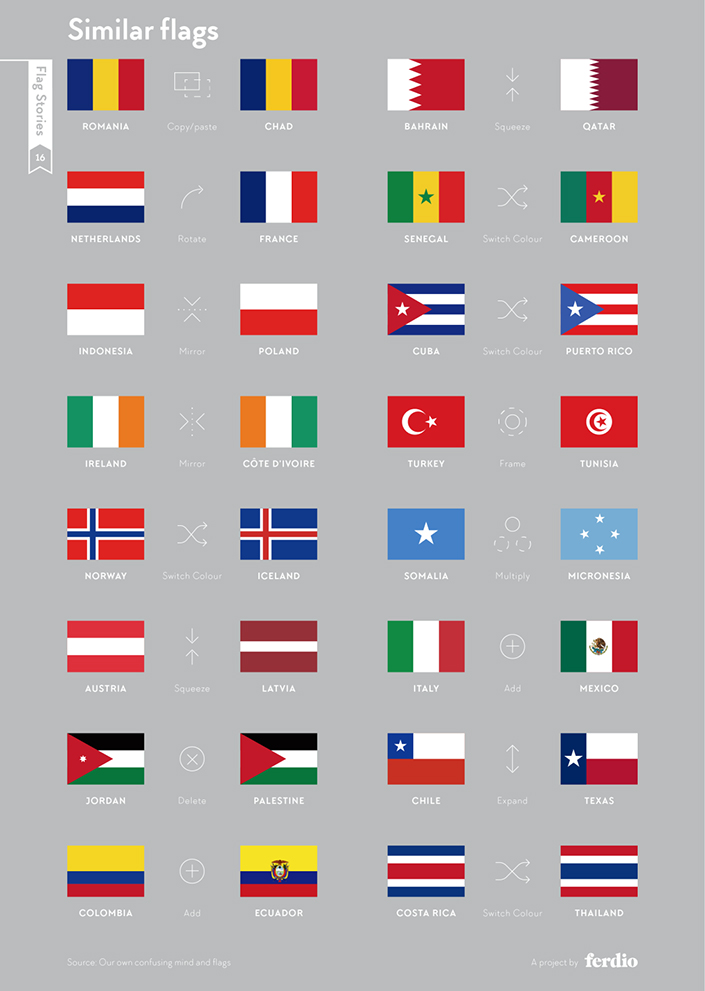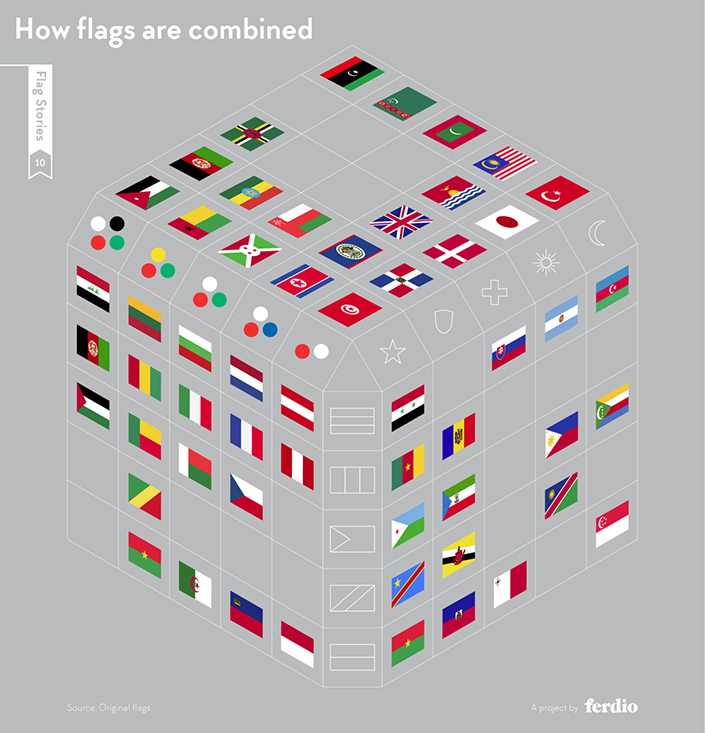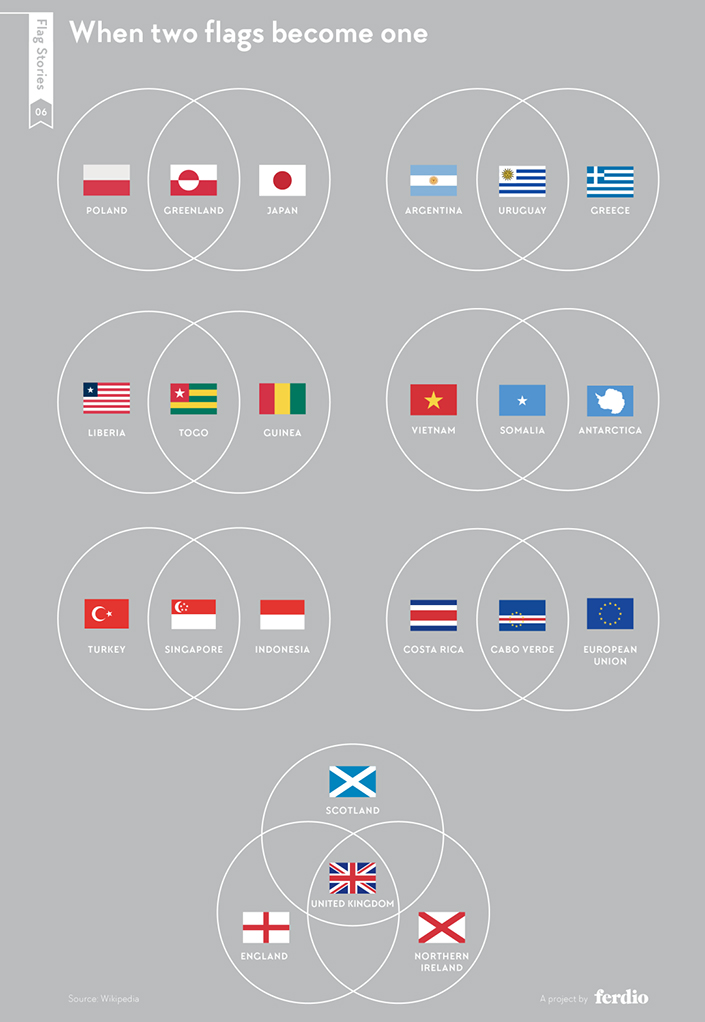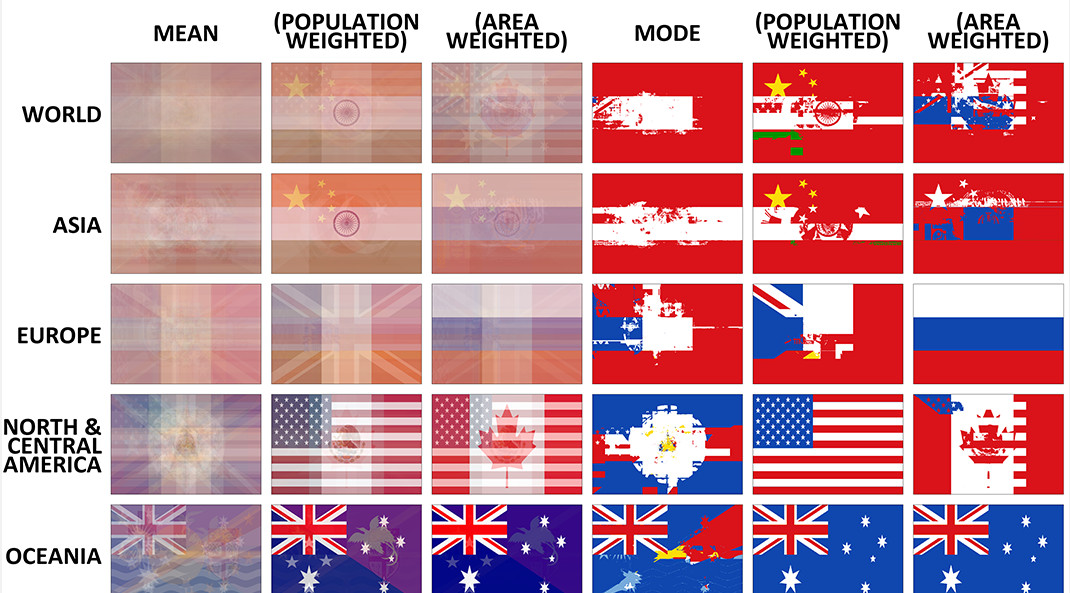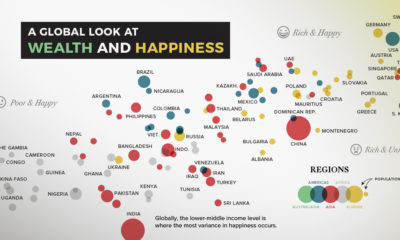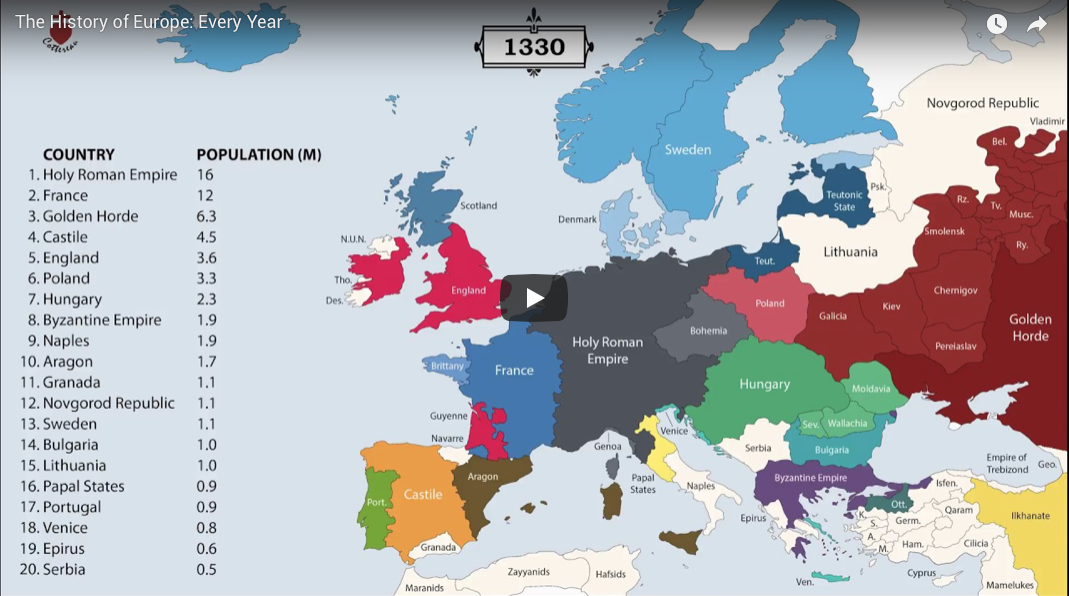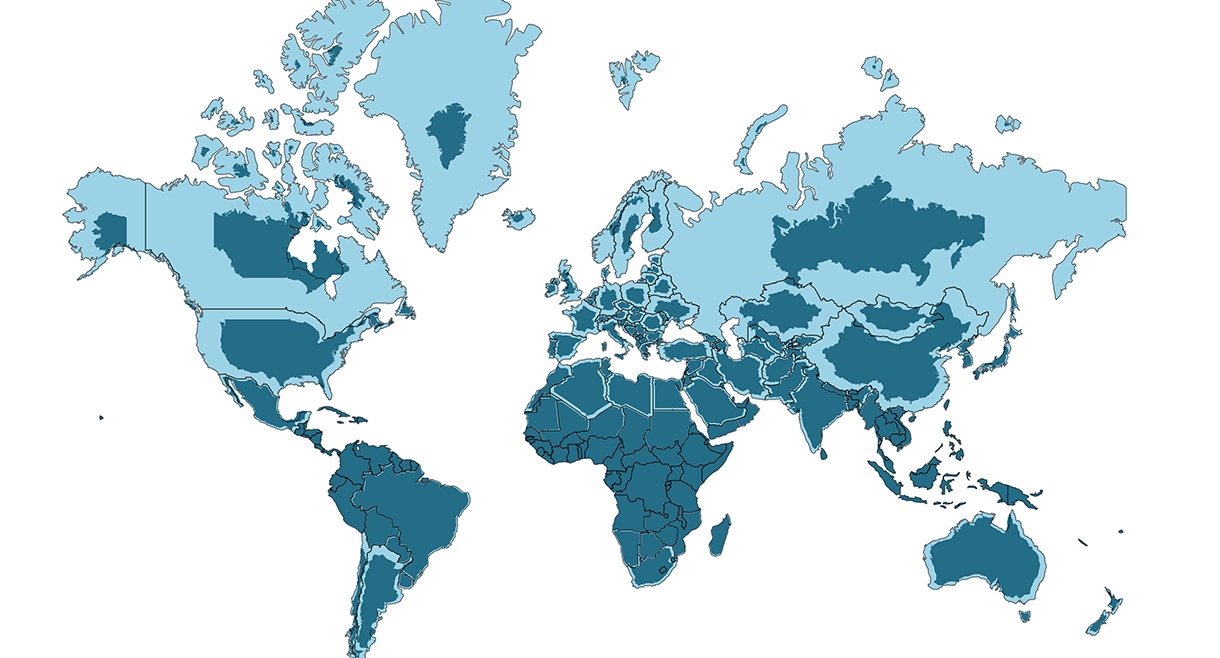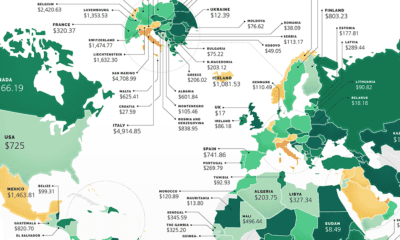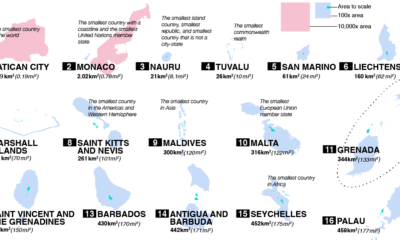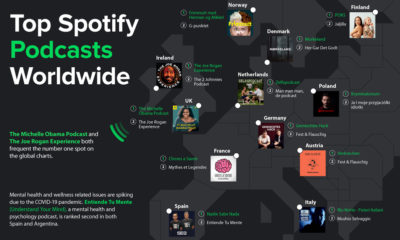In today’s graphic from Reddit user Udzu, flags serve as the visual raw material for experimentation. The visualization uses flags to show the “weight” of a country’s population or land area within its respective region – a unique thought exercise worth digging into.
Vexillology, Visualized
When all the world’s flags are averaged, the result is a hazy rectangle with outlines of popular flag layouts (e.g. tricolor, triband). That said, one feature that does stand out is the Union Jack in the top left corner, showing that Great Britain’s historical influence lives on even through flag design. Russia, even with its landmass divided in two, is prominent on both Europe and Asia’s area-weighted graphics. Interestingly, Udzu also repeated the process using U.S. state flags. As one would expect, California and Texas dominate the population-weighted image. In the area-weighted version, Alaska’s big dipper flag and the word “Montana” become more prominent.
Examining the Building Blocks of Flags
Flags are fascinating for a number of reasons. They’re loaded with history, charged with patriotic pride, and commonalities between flags often signal connections between the people who live in those respective countries. These serious considerations aside, flags are fun to look at from a design perspective. There are nearly two hundred official countries in the world, and many of them embrace similarly minimalist flag layouts. As a result, it’s no surprise that some of them are strikingly similar.
Source: Flag Stories With many similar colors and layouts in the roster of national flags, it seems like every combination is taken. However, as the visualization below identifies, a few specific combinations are still up for grabs.
Source: Flag Stories In case anyone out there is thinking of forming a new country, combining elements from different flags is a valid approach. Joking aside, the Union Jack really was created by combining aspects of the three older national flags of England, Scotland, and Northern Ireland.
Source: Flag Stories on Even while political regimes across these countries have changed over time, they’ve largely followed a few different types of governance. Today, every country can ultimately be classified into just nine broad forms of government systems. This map by Truman Du uses information from Wikipedia to map the government systems that rule the world today.
Countries By Type of Government
It’s important to note that this map charts government systems according to each country’s legal framework. Many countries have constitutions stating their de jure or legally recognized system of government, but their de facto or realized form of governance may be quite different. Here is a list of the stated government system of UN member states and observers as of January 2023: Let’s take a closer look at some of these systems.
Monarchies
Brought back into the spotlight after the death of Queen Elizabeth II of England in September 2022, this form of government has a single ruler. They carry titles from king and queen to sultan or emperor, and their government systems can be further divided into three modern types: constitutional, semi-constitutional, and absolute. A constitutional monarchy sees the monarch act as head of state within the parameters of a constitution, giving them little to no real power. For example, King Charles III is the head of 15 Commonwealth nations including Canada and Australia. However, each has their own head of government. On the other hand, a semi-constitutional monarchy lets the monarch or ruling royal family retain substantial political powers, as is the case in Jordan and Morocco. However, their monarchs still rule the country according to a democratic constitution and in concert with other institutions. Finally, an absolute monarchy is most like the monarchies of old, where the ruler has full power over governance, with modern examples including Saudi Arabia and Vatican City.
Republics
Unlike monarchies, the people hold the power in a republic government system, directly electing representatives to form government. Again, there are multiple types of modern republic governments: presidential, semi-presidential, and parliamentary. The presidential republic could be considered a direct progression from monarchies. This system has a strong and independent chief executive with extensive powers when it comes to domestic affairs and foreign policy. An example of this is the United States, where the President is both the head of state and the head of government. In a semi-presidential republic, the president is the head of state and has some executive powers that are independent of the legislature. However, the prime minister (or chancellor or equivalent title) is the head of government, responsible to the legislature along with the cabinet. Russia is a classic example of this type of government. The last type of republic system is parliamentary. In this system, the president is a figurehead, while the head of government holds real power and is validated by and accountable to the parliament. This type of system can be seen in Germany, Italy, and India and is akin to constitutional monarchies. It’s also important to point out that some parliamentary republic systems operate slightly differently. For example in South Africa, the president is both the head of state and government, but is elected directly by the legislature. This leaves them (and their ministries) potentially subject to parliamentary confidence.
One-Party State
Many of the systems above involve multiple political parties vying to rule and govern their respective countries. In a one-party state, also called a single-party state or single-party system, only one political party has the right to form government. All other political parties are either outlawed or only allowed limited participation in elections. In this system, a country’s head of state and head of government can be executive or ceremonial but political power is constitutionally linked to a single political movement. China is the most well-known example of this government system, with the General Secretary of the Communist Party of China ruling as the de facto leader since 1989.
Provisional
The final form of government is a provisional government formed as an interim or transitional government. In this system, an emergency governmental body is created to manage political transitions after the collapse of a government, or when a new state is formed. Often these evolve into fully constitutionalized systems, but sometimes they hold power for longer than expected. Some examples of countries that are considered provisional include Libya, Burkina Faso, and Chad.

